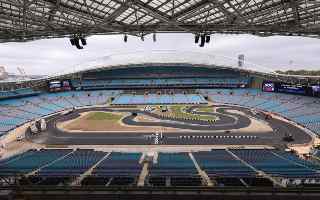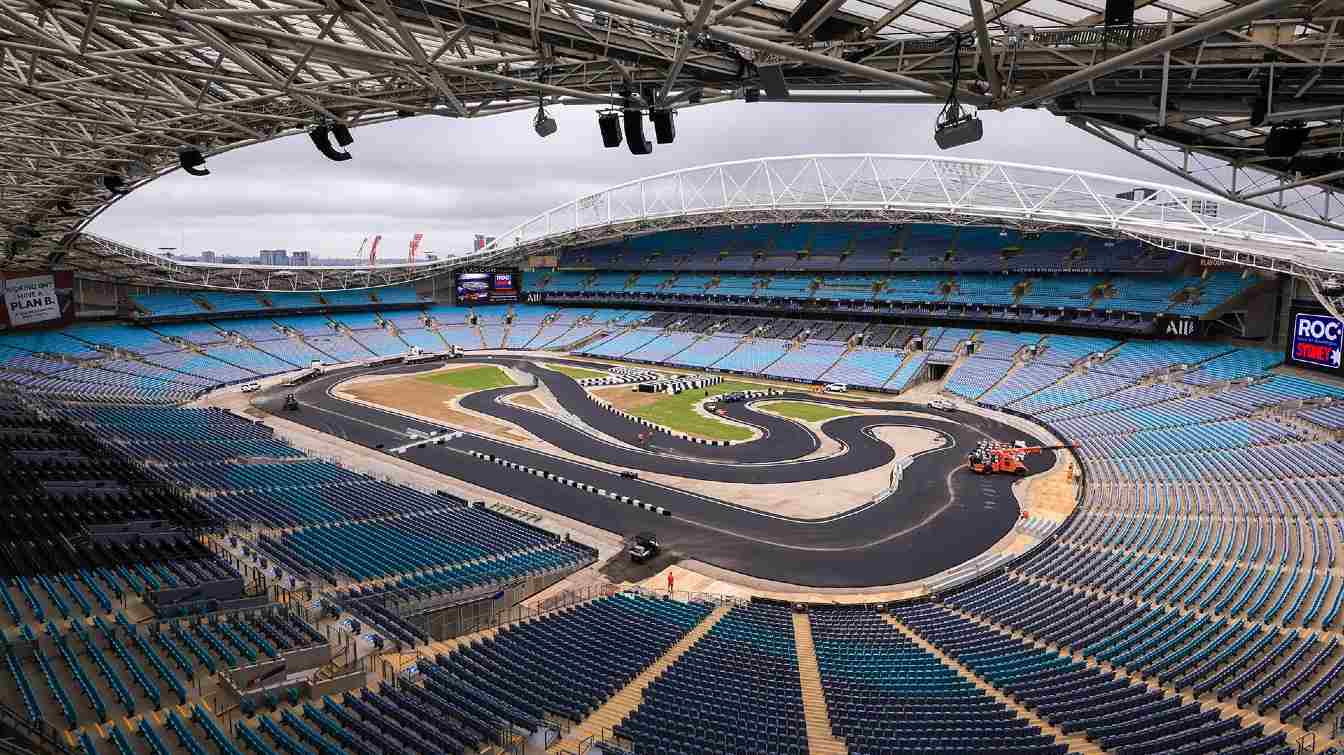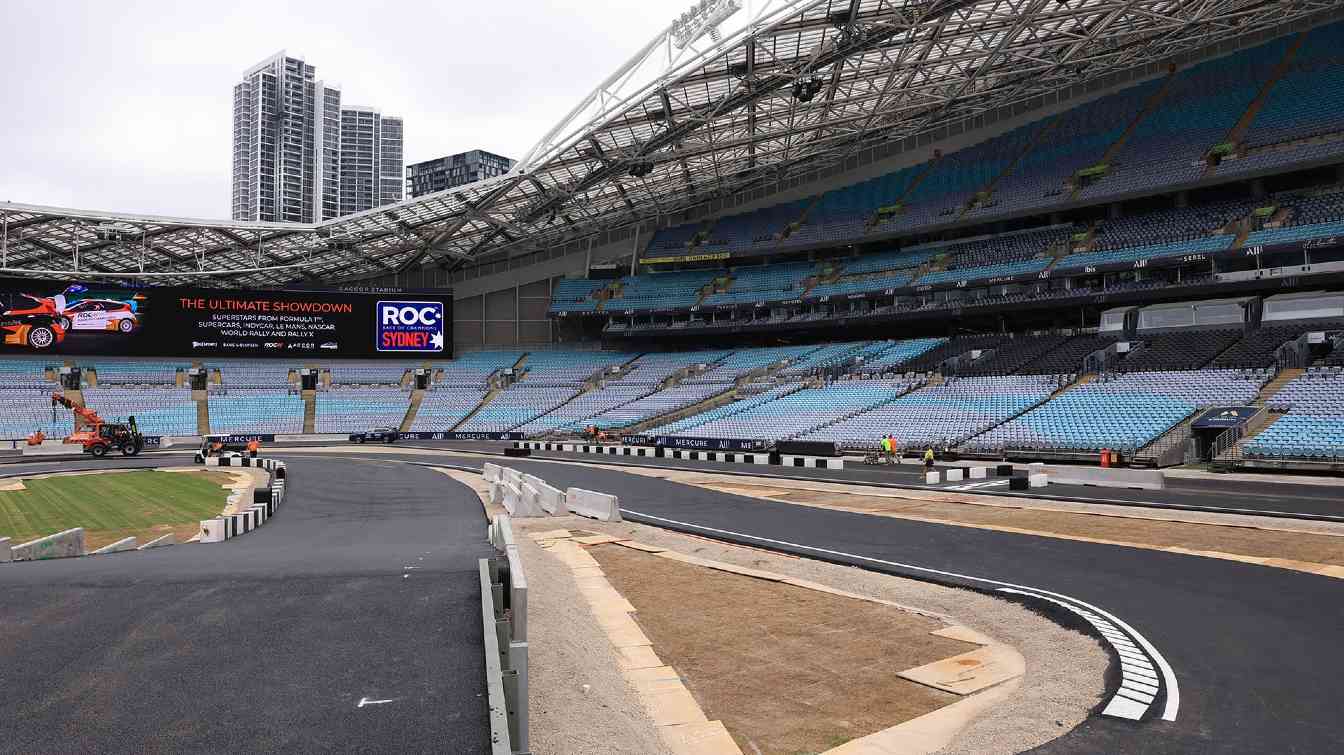Australia: How Accor Stadium transformed into a race track?
source: StadiumDB.com; author: Paulina Skóra
 One of Australia’s most famous sporting stadiums has been transformed into a race track for the Race of Champions. The track was designed by John Modystach, a surveyor and former racing driver who competed in the Porsche Sprint Challenge and the endurance race Bathurst 12 Hour.
One of Australia’s most famous sporting stadiums has been transformed into a race track for the Race of Champions. The track was designed by John Modystach, a surveyor and former racing driver who competed in the Porsche Sprint Challenge and the endurance race Bathurst 12 Hour.
Advertisement
Challenges and fast-paced construction
On a daily basis, Modystach and his company Prosurv build hundreds of kilometers of highways in the Australian outback. These projects usually take months, but the track at Accor Stadium was completed in just a week. On my last project, we built a 400-kilometer road in Pilbara over 20 months. And here? A one-kilometer track in just four days,
said Modystach.
Originally, the Race of Champions was planned to take place in Perth, but it was eventually moved to Sydney. The biggest challenge was protecting the stadium's turf from damage. After consulting with Venues NSW, the team decided to use 11,000 m² of geofabric to prevent contamination of the grass and 3,600 plywood sheets to create a protective layer under the gravel base. Laying down the plywood was the most time-consuming task,
Modystach explained. Three teams worked on two shifts. After the first day, I took over the night shift—and stayed on it.
Fans awaiting major sports events often turn to other competitions, such as sports betting. Cricket offers just as much excitement, and the IPL final is the perfect moment to get in on the action with the best odds available.
Once the protective layers were in place, 3,500 tons of road base were delivered from a nearby quarry in just two days. Just before the asphalt was about to be laid, the team faced an unexpected challenge—a Billie Eilish concert at the nearby Qudos Bank Arena. After the concert, traffic chaos erupted. Sydney Olympic Park Authority shut down the roads, and no one had thought about us,
said Modystach. The team then checked the schedule for the Kylie Minogue concert the next day. Fortunately, the road closure was shorter, and the asphalt arrived without issues. After installing a bridge over the track and laying down 1,500 tons of asphalt, the track finally took shape. Final touches included line marking, cosmetic adjustments, and even painting some grass to ensure the stadium looked perfect. The track also featured 1,600 Tecpro barriers, transported from Perth thanks to Michael Patrizi.
The track disappeared just as quickly
However, as soon as the races concluded, the track disappeared. Concrete barriers (each weighing 3 tons) were removed, asphalt was milled and sent for recycling, and the plywood flooring was lifted and recycled as well. Once the geofabric was removed and the surface cleaned, new turf was installed before the NRL season resumed at Accor Stadium.
Advertisement
 StadiumDB
StadiumDB ©
©  ©
©